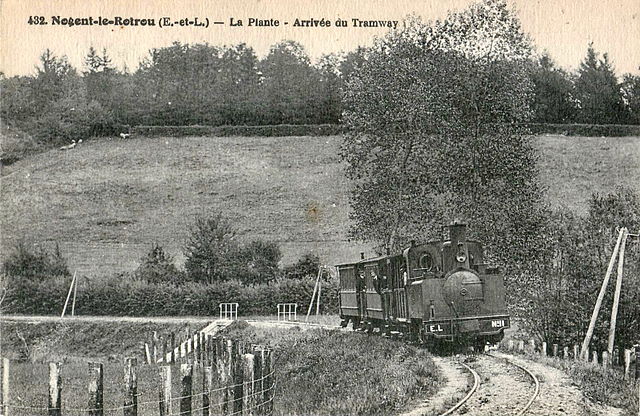At the end of the 19th and the beginning of the 20th century, the Southwest Line was designed to connect the port of Le Havre to the left bank of the Seine, and then to the west and southwest of France, by crossing the river near the estuary.
The Southwest Line gave rise to numerous projects; here, two line layouts with tunnel crossings of the Seine (downstream), and a third with viaduct crossings further upstream.
The submerged bridge crane roject by Danisy-Martin (1895).
The transporter bridge project by Ferdinand Arnodin (1897).
The cantilever viaduct project by Chemins de fer de l'Ouest (1900).
Voie ferrée d'intérêt local
In France, a voie ferrée d'intérêt local, abbreviated VFIL, is a secondary railway constructed by a local administrative division, serving sparsely populated rural areas. These areas were beyond the economic reach of the networks of the intérêt général, which were concessions of the grandes compagnies who ran their lines for profit.
A Tramways d'Eure-et-Loir train, photographed near Nogent-le-Rotrou in 1910
The Chemin de Fer de la baie de Somme is now a heritage railway
Converted lorry used for express goods and courier services, 1921
The Amiens – Aumale – Envermeu line in the Somme and Seine-Inférieure, used metre gauge








